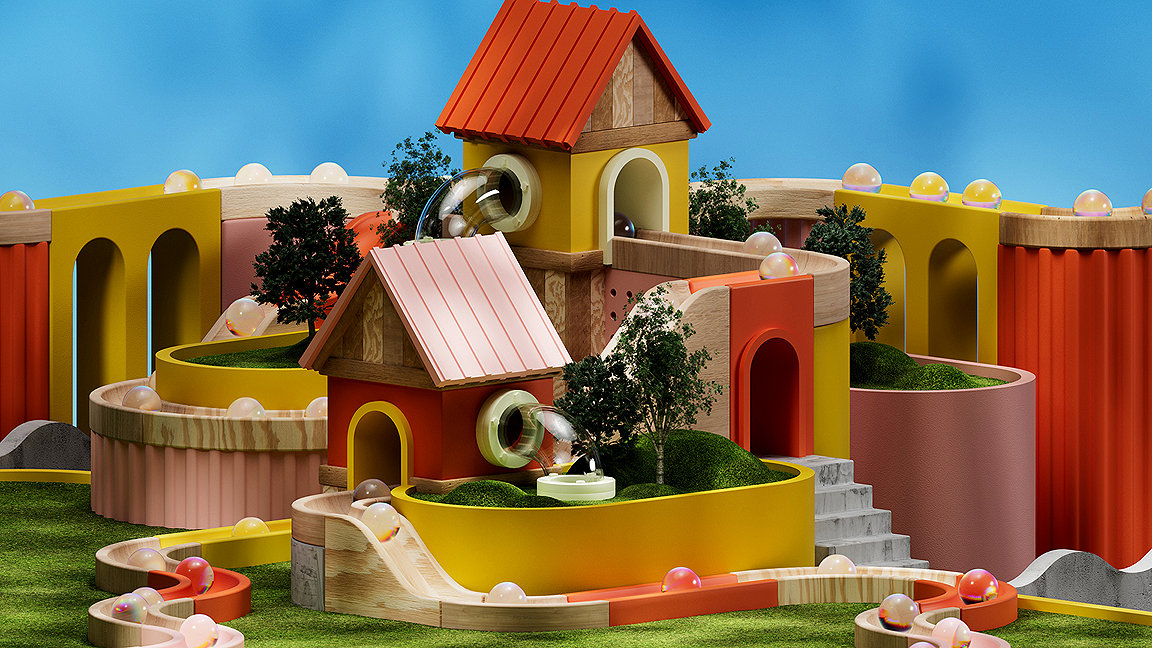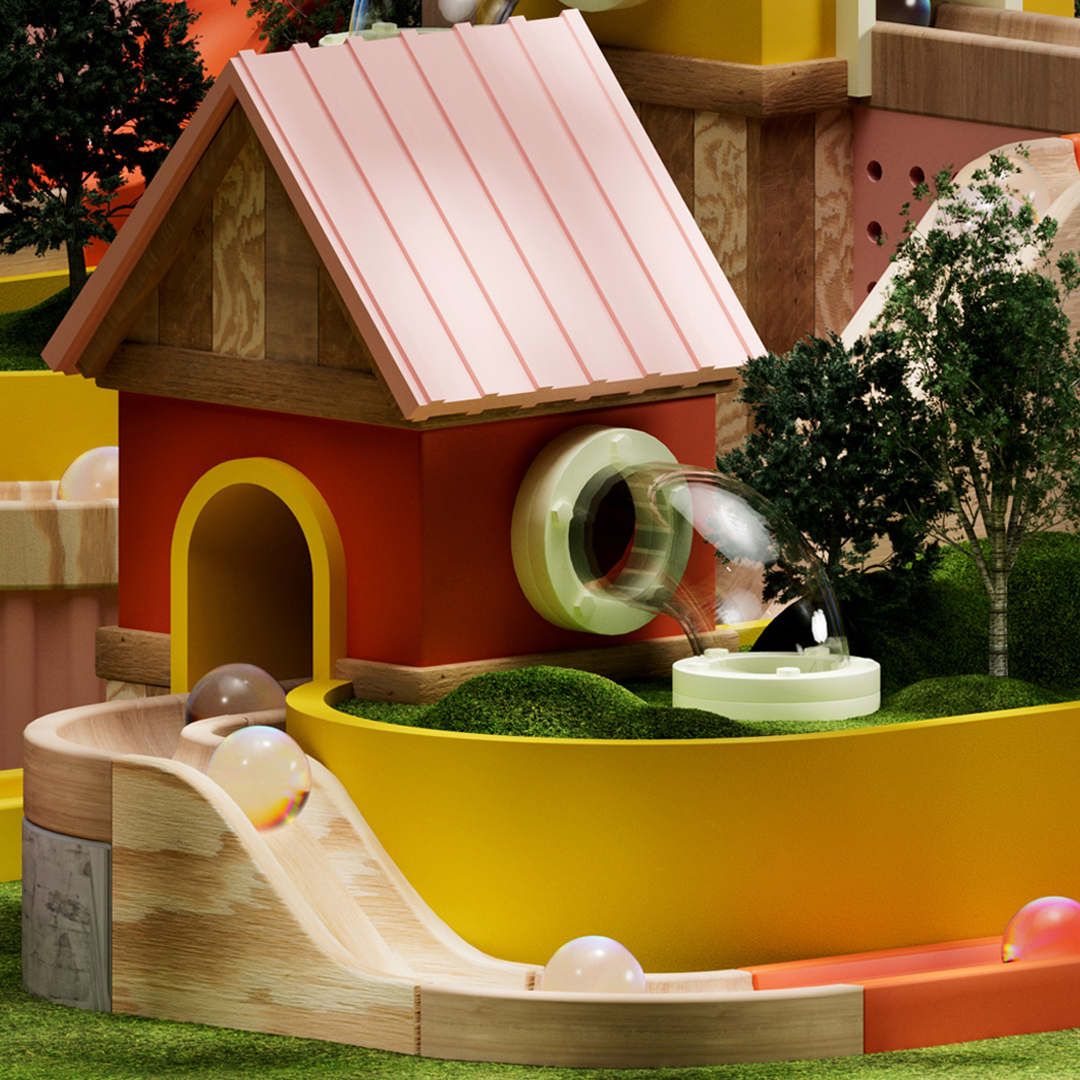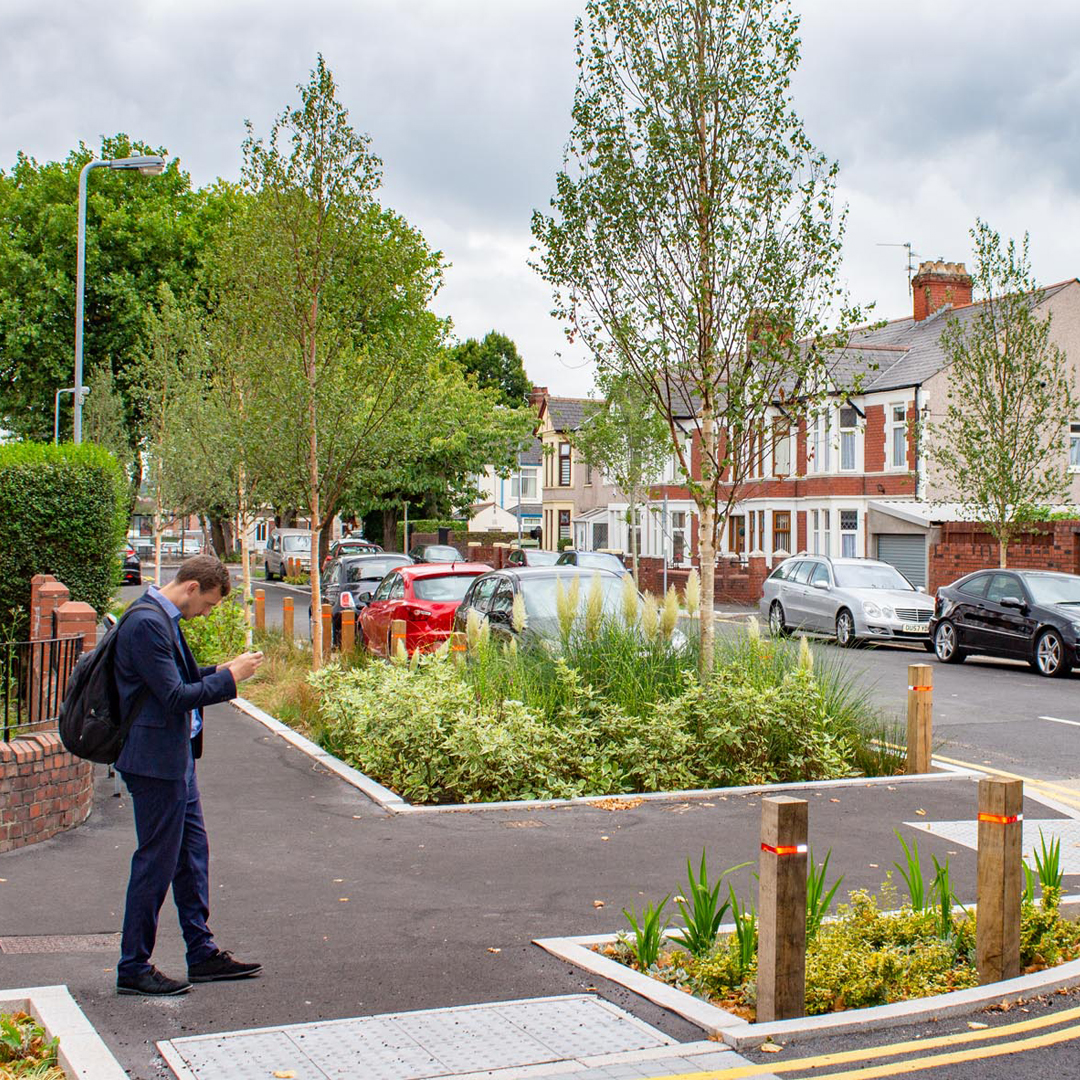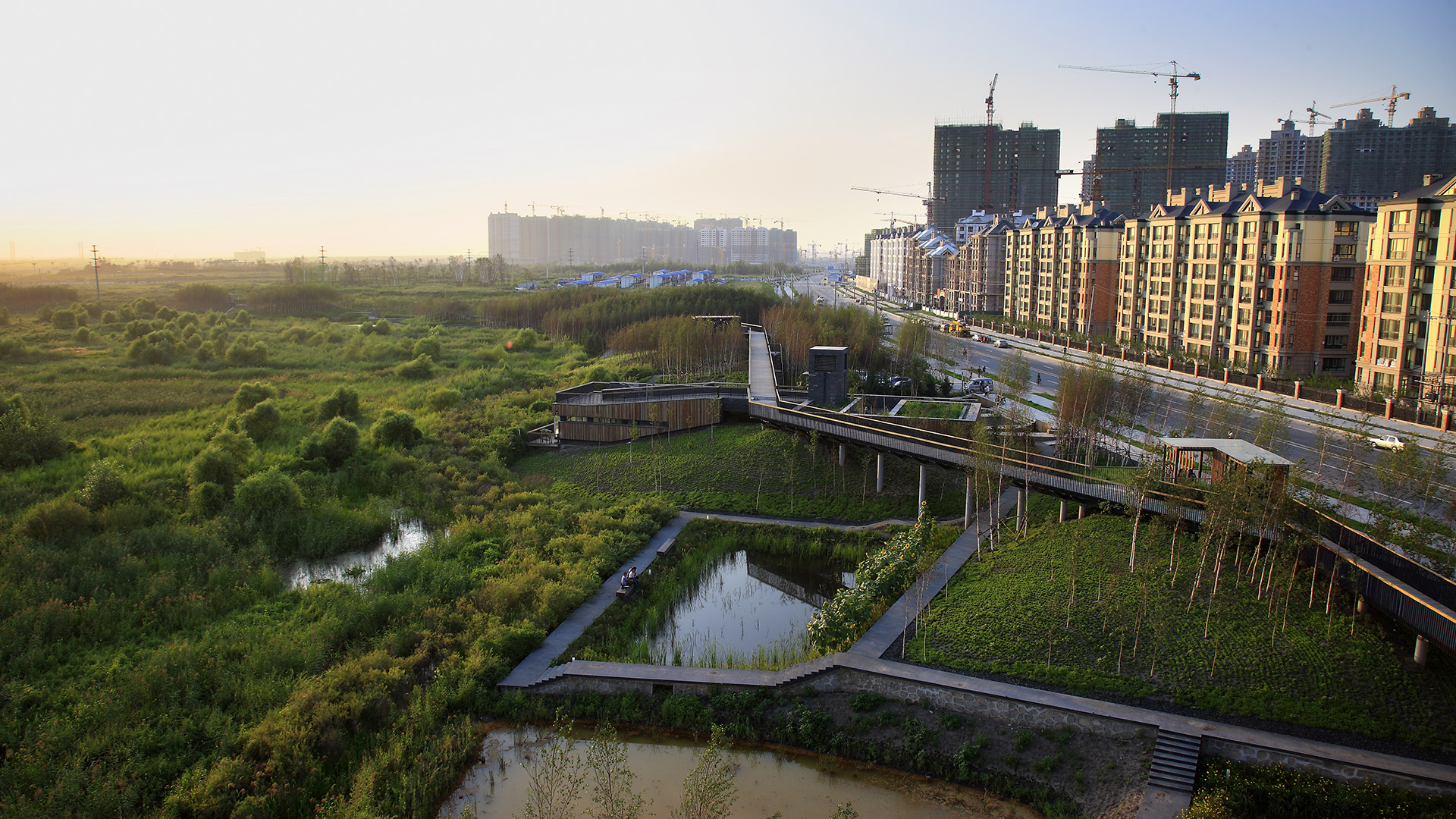
Illustration by Thomas Burden
As the world battles against the impact of climate change, the built environment must balance the demand to develop with the necessity of protecting water quality and preventing increased flooding. Sustainable Urban Drainage Systems or SuDS are just one part of this balancing act.
Used across the world to manage and capture surface rainfall, SuDS advocates have long urged the industry to look at these diverse, sustainable systems that have multiple benefits to nature and the built environment. In the UK, SuDS are making a major leap, with a raft of new legislation that will not only mandate SuDS in all new English developments but will also highlight their role in nutrient neutrality and improving biodiversity.
SuDS mimic the functions of natural drainage such as streams, wetlands or ponds – the very landscape features that have been eroded through decades of development – to store, transport and slow the flow of surface rainwater. By intercepting rainwater, SuDS help to guard against the UK’s ageing sewage systems becoming overwhelmed, which results in dangerous flooding and regular sewage leaks.
Flooding is the largest climate threat to the UK – with an estimated 3.2m properties in England alone at risk of surface water flooding. “There are many, many reasons for SuDS,” says Chryse Tinsley, landscape planner at Leicester City Council, which has long used SuDS to protect against flooding. “But I don’t think we have any option, because we have such an ageing pipes system that just won’t have the capacity [without SuDS].”
Internationally, SuDS have a variety of different names. These include Water Sensitive Urban Design in Australia and Stormwater Control Measures deployed nationally across the US. These sustainable drainage measures come in all shapes and sizes from green roofs and permeable paving, to wetlands, ponds and soakaways or meadow basins. To the average eye, SuDS are often invisible. They are the pretty tree pits in city centres, the rain gardens outside schools or the wildflower meadows, all hiding complex but natural water transport and filtration systems.
Benefits beyond flood prevention
SuDS are predominately used to alleviate surface water flooding, but they have a much broader range of uses. The Construction Industry Research and Information Association (CIRIA), which publishes the design manual on SuDS, lists 20 different benefits. These span from improving water quality by filtering out pollutants to reducing carbon emissions, to improving biodiversity and air quality. To create these benefits, SuDS design should meet four pillars: water quantity, quality, biodiversity and amenities. “Designed well, there’s no reason why these spaces can’t provide for play, biodiversity and contribute to climate action plans,” adds Tinsley.
SuDS are now set to play a role in alleviating dangerous levels of pollutants in protected habitats across England. Over the last two years the government has instructed 74 councils to only grant planning permission for new developments that are ‘nutrient neutral’ – which don’t add any more nitrates or phosphorous to surrounding protected areas. The new rules have halted the development of over 120,000 new homes not meeting these requirements. The solution, outlined in November last year, is the creation of a Nutrient Mitigation Scheme, a national plan using approved SuDS and wetlands to offset the impact of development. From March 2023, developers will have to secure a number of nutrient neutrality credits earned through on-site SuDS or adjacent wetlands.
George Rose, director of environmental engineering at Water Design Engineers, says although SuDS are just one part of the solution, he’s already seeing councils looking at obliging developers to get as much “nutrient neutrality from SuDS” on-site first before they look at wetland offsetting. “There's only so much mitigation to go around off-site, he says. “Councils saying ‘you have to do your bit on-site’ makes a lot of sense.”
Rose points to a 720-home development at Conningbrook Park in Ashford, Kent as an example. It’s taken a year to get planning approval for an adjacent constructed wetland, the first, he says, that has been permitted for a large-scale housing scheme. This will pull water out of the local river, filter out the phosphorus and nitrates and then flow the water back in. “They have implemented some SuDS on-site and have gone as far as they can,” he says. “But they’re relying on offsetting their impact by creating an off-site wetland that will be linked to the development through section 106.” Water companies in these protected areas will also be compelled to upgrade their wastewater treatment works by 2030 to reduce their levels of pollutants.
Mandatory SuDS in new developments
Across the rest of England, SuDS have also shot up the agenda with the news in January that the government will enact Schedule 3 of the Flood and Water Management Act 2010. This will mandate SuDS in every new development, set out national technical standards and outline future adoption and maintenance responsibilities. The move comes after a concerted campaign from construction, water and environmental organisations warning not only of flood risk but also highlighting SuDS’ complementary role in biodiversity and nutrient neutrality. Schedule 3 will be implemented in 2024.
Rose says he expects Schedule 3 will include all four design pillars of SuDS, moving the industry away from “crates and craters” and into “proper SuDS” which will use the landscape. John Williams, professor of environmental technology at the University of Portsmouth, says there is a long way to go in defining technical standards and how adoption (responsibility for future management) is going to work with councils. “But it is going to take away a lot of the uncertainties,” he says. “It does give a clear route to adoption, which is one of the barriers to developers embracing SuDS at the moment.”
Both Tinsley and Rose say it will need a “mindset change” from developers. Rose says that it will turn development “on its head” because SuDS will have to be planned at a much earlier stage. “If you want to do good SuDS you’ve got to think about them from the outset,” adds Tinsley. “You’ve got to allow more space.” She says “good SuDS” mean developers are more likely to meet the biodiversity net gain requirements due in begin November, as well providing a more quality open space. “If you can make one bit of land do all these things then it’s not going to be hugely more expensive, but it’s a radical new way to approach development.”

“Designed well, there’s no reason why these spaces can’t provide for play, biodiversity and contribute to climate action plans” Chryse Tinsley, Leicester City Council
Case study: Cardiff combines SuDS and cycling
In Wales, Schedule 3 was enacted in 2019 and in Cardiff SuDS have been particularly embraced. One of the city’s first major retrofitting projects was across Grangetown, a neighbourhood of 550 properties. Cardiff Council, working with local water companies, constructed 108 rain gardens, planted 130 trees and fitted permeable paving, creating 1,700m2 of new green space. This removed an average of 40,000m3 of surface runoff from the combined sewer system annually.
It has also retrofitted SuDS in the city centre and has just completed a scheme along a new cycleway across the city. Liam Shields MRICS, senior quantity surveyor at Volos, a project manager on the cycleway, says SuDS can be complex, with issues such as design, planting seasons and different stakeholders to consider. “The SuDS do look really good,” he adds. “They add a bit of greenery and provide a segregation feature, which creates a safe environment for the cyclists and the vehicles.”

Grangetown. Image: GreenBlue Urban

